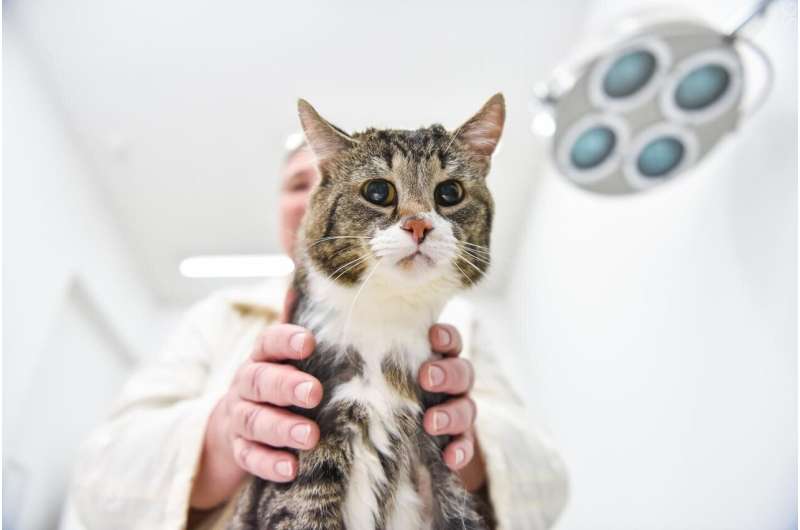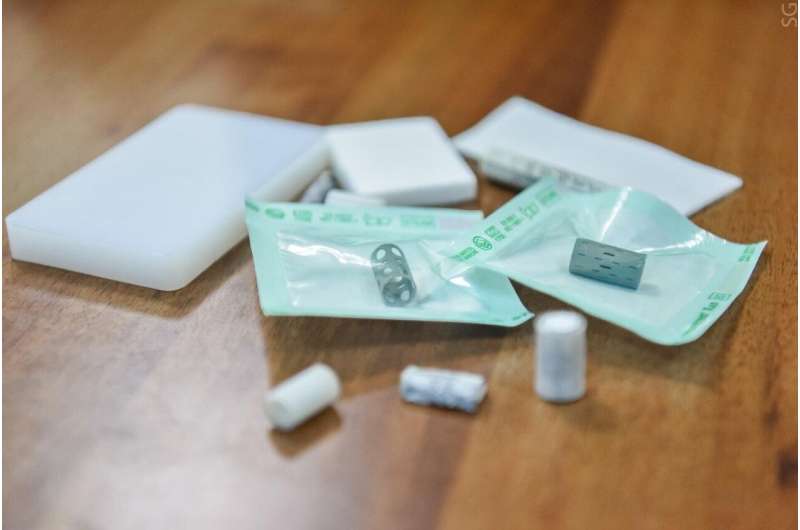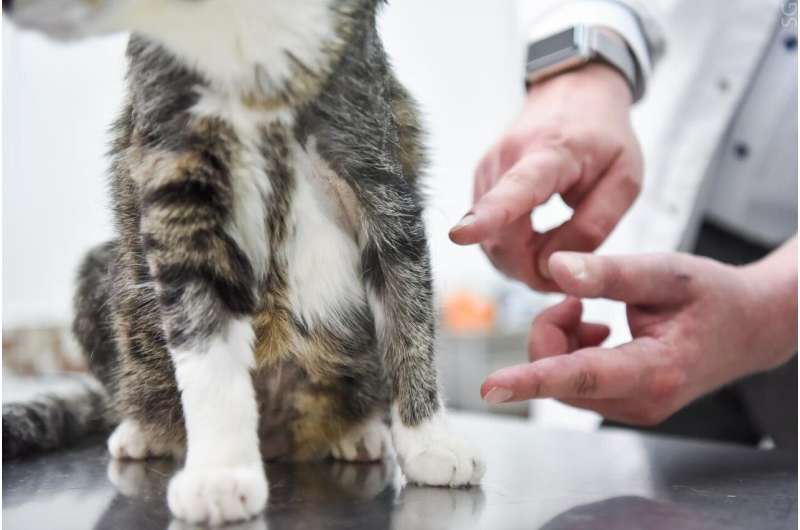Unique hybrid implant first installed to a cat

A scientific team from a small innovative enterprise, Biomimetix, based at the National University of Science and Technology MISIS together with their colleagues from the N.N. Blokhin National Medical Research Centre of oncology developed a unique implant to replace damaged bone fragments. The implant, which imitates real bone structure, was tested on a domestic cat with osteosarcoma by surgeons at the veterinary clinic "Biocontrol." According to postoperative observations, the implant fits well and the dynamics of recovery of the whiskered patient is positive.
Young scientists from a small innovative enterprise based on the National University of Science and Technology MISIS has been developing biocompatible bone implants based on ultrahigh molecular weight polyethylene (UHMWPE). The core of the hybrid implant is made of porous ultra-high molecular weight polyethylene, and the frame is made of a titanium alloy printed on a 3-D printer. Such a structure imitates the structure of real bone, where UHMWPE corresponds to the porous internal, trabecular part, and titanium alloy imitates the solid external, cortical part.
In March-April 2019 the therapy was implanted on a domestic cat, "Lapunya" ("Sweetie" in English) after the removal of a 6 cm bone fragment, damaged by osteosarcoma. In collaboration with N. Blokhin National Medical Research Centre of oncology a unique bone-cellular structure was developed: Biomimetix's specialists manufactured the implant, and their colleagues from the Laboratory of Cellular Immune Systems and doped it with cells extracted from the bone marrow of the cat, to shorten the adaptation period. The surgery was carried out by surgeons of the veterinary clinic "Biocontrol."

"Our implant almost completely corresponds to the usual bone. First of all, this means that it will not take on excessive load, so the bone at the place of its attachment will not become brittle, as it often happens with metal implants. In addition, the polymer surface of the implant is convenient to dope it with the patient's own cells, which significantly accelerates survival. This is especially important given the fact that we cannot explain to pets that at the time of recovery, the limb should be protected," says Fyodor Senatov, CEO of Biomimetix and researcher at NUST MISIS Center of Composite Materials.
According to the postoperative observations as of July 2019 the implant fits well, the dynamic of recovery is positive and the cat can walk normally. Thus, the use of such a hybrid cell-engineering implant seems a good alternative to the traditional radical treatment—amputation, as well as to much more complex metal implants.

Provided by National University of Science and Technology MISIS





















